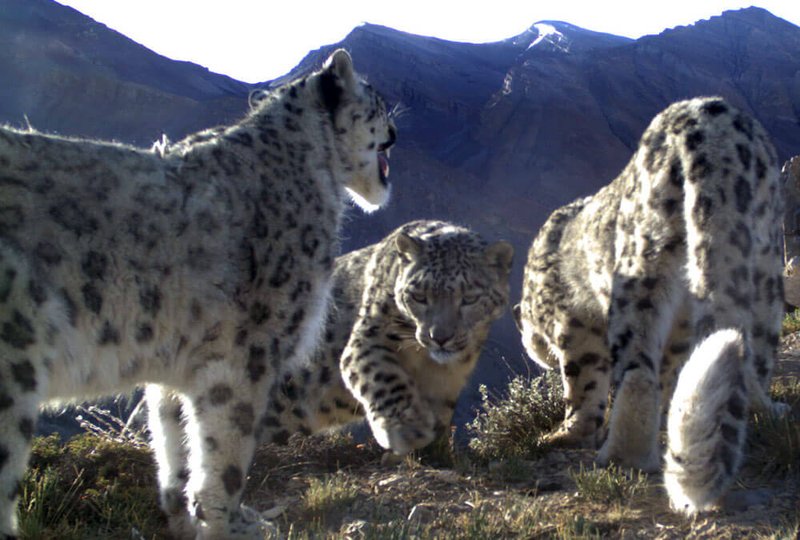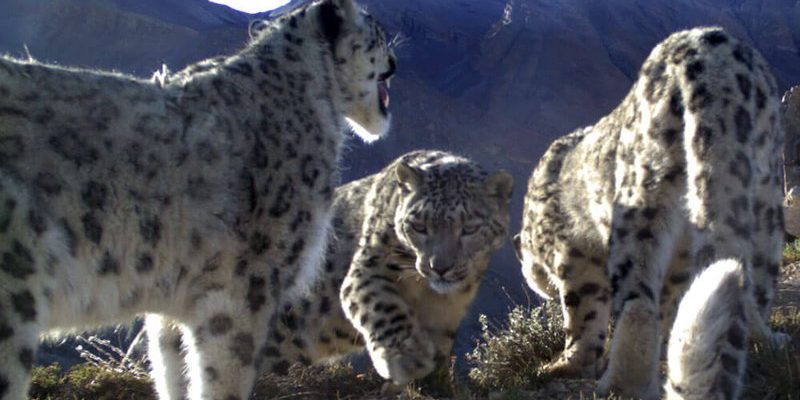
Imagine a snow leopard perched high on a rocky ledge, surveying its domain with piercing eyes. This majestic feline doesn’t just rely on brute strength; it uses its brain to navigate its environment and hunt prey. Just like how we might analyze a situation before making a decision, snow leopards think through their actions, showcasing a remarkable level of cognitive skill. In this article, we’ll dive into the intelligence of snow leopards, exploring their problem-solving skills, social behavior, and unique adaptations that reflect their smart strategies for survival.
Cognitive Abilities in Snow Leopards
When we talk about how smart a snow leopard is, we’re looking at more than just instinct. These cats have shown impressive cognitive skills that help them thrive in harsh environments. For instance, snow leopards are exceptionally good at learning and adapting behaviors based on their experiences. This ability to adjust means they can improve their hunting techniques, which is crucial for survival in the rugged terrain of the mountains.
Snow leopards can remember the locations where they’ve found food or encountered potential threats. This memory is vital, especially in a landscape filled with steep cliffs and rocky outcrops. It’s like when we remember the best spots to hunt for bargains while shopping. The snow leopard’s brain acts like a well-organized map of its territory, guiding it to the most efficient routes and safe havens.
Another fascinating aspect of their intelligence is their ability to communicate. Snow leopards use a variety of vocalizations and body language to express themselves. They can growl, meow, and even hiss when needed, much like how we use our voices and facial expressions to convey feelings. Understanding these forms of communication is crucial for their social interactions, especially during mating and territorial disputes.
Hunting Strategies and Intelligence
Let’s take a closer look at how snow leopards use their smarts when it comes to hunting. Unlike many big cats that enjoy straightforward approaches, snow leopards are stealthy and strategic. They often stalk their prey, using the element of surprise to their advantage. This strategy requires not only patience but also a sharp understanding of their surroundings.
During a hunt, a snow leopard will assess the terrain and its potential targets. They can leap up to 15 feet in a single bound, allowing them to navigate steep cliffs and catch prey that might seem out of reach. This impressive physical ability is complemented by their intelligence, as they know when to make these daring jumps. It’s similar to how we might stand back and evaluate a situation before taking a leap of faith in our own lives.
Moreover, snow leopards demonstrate an ability to recognize patterns in their prey’s behavior. They can determine which times of day animals are most vulnerable and adjust their hunting schedules accordingly. This kind of intelligent planning highlights their understanding of the ecosystem and the species they rely on for survival.
Social Behavior and Intelligence
Snow leopards are often considered solitary animals, but this doesn’t mean they lack social intelligence. In fact, their social structures are quite complex. They communicate through scent marking, vocal sounds, and even visual displays. This communication is essential for maintaining territory and attracting mates.
Interestingly, during breeding season, males and females come together, showcasing a different side of their social intelligence. They engage in displays that demonstrate strength and fitness, helping them connect on a deeper level. It’s a bit like dating in the animal kingdom, where showing off your best qualities can make all the difference.
Even in solitary life, snow leopards are aware of their neighbors. They can recognize the scents of other leopards and will adjust their behaviors accordingly, which helps prevent conflicts over territory. This awareness reflects a smart social strategy that ensures their survival while minimizing risks.
Adaptations That Reflect Intelligence
If you look closely at snow leopards, you’ll notice adaptations that highlight their intelligence. For one, their thick, plush fur acts as a natural coat against the freezing temperatures of the mountains. But it’s not just about staying warm; this fur also provides excellent camouflage in the rocky terrain, helping them avoid detection by both prey and rivals.
Their large, furry paws act like natural snowshoes, allowing them to traverse deep snow without sinking. This adaptation is a perfect example of using their environment to their advantage, much like how we might choose specific shoes for different activities. This combination of physical and cognitive adaptations showcases how snow leopards have evolved to be not just survivors, but smart navigators of their challenging habitats.
On top of that, their keen eyesight and exceptional hearing make them adept at spotting potential threats and prey from a distance. This heightened sensory perception is part of what makes their intelligence stand out. They’re equipped to react quickly, whether that means closing in on a meal or avoiding a predator.
Conservation Challenges and Smart Solutions
Unfortunately, snow leopards face numerous threats in the wild. Habitat loss, poaching, and climate change all put pressure on their populations. Here’s where their intelligence can help us create strategic conservation efforts. By understanding their behavior and habitat needs, we can develop smart solutions to protect them.
For instance, community-based conservation programs often involve local people in protecting snow leopards. This approach uses both local knowledge and scientific research to create plans that benefit both wildlife and humans. These collaborations exemplify how human intelligence can merge with animal behavior to foster a healthier ecosystem.
Another effective strategy is educating people about the importance of snow leopards. As communities learn about the ecological role these big cats play, they often become more invested in protecting their habitats. This shift in attitude can lead to a more sustainable coexistence, benefiting snow leopards and the communities that share their environment.
In protecting snow leopards, we’re not just saving a species; we’re preserving the intricate web of life in which they exist. Ultimately, our ability to adapt and strategize can mirror the intelligence snow leopards display in their daily lives.
The Bottom Line: Snow Leopard Intelligence
So, how smart is a snow leopard? Honestly, their combination of cognitive abilities, adaptive strategies, and social behaviors paints a picture of a rather intelligent animal. From their clever hunting tactics to their complex social interactions, snow leopards showcase a remarkable level of intelligence that helps them thrive in one of the most challenging environments on Earth.
As we learn more about these incredible creatures, it’s essential to appreciate the relationship between their intelligence and conservation efforts. By recognizing their smarts, we can better understand their needs and work toward a future where both snow leopards and humans can coexist peacefully.
In closing, snow leopards are a beautiful reminder of nature’s ingenuity. Their intelligence, wrapped in the majesty of their alpine homes, invites us to look closer and understand the remarkable lives they lead. Let’s continue to explore and protect these extraordinary animals, celebrating the intelligence that not only defines them but also enriches our world.

